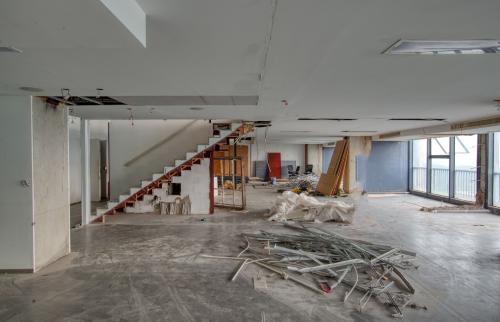Executive Summary
Vacant and abandoned properties present both a significant problem, and an opportunity, for
many central cities.
These properties impose economic and social costs on localities and neighborhoods by
reducing property values, creating blight, and becoming targets for vandalism and criminal activity.
Yet they also hold out tremendous opportunities for the development of new housing, businesses,
and public amenities in cities.
But not only cities bear the responsibility of addressing vacant and abandoned land and
structures. State governments play an important role also, because local improvement of the
redevelopment process often depends on state-level legislative reform that is not always
forthcoming. Hence this paper, which summarizes an extensive survey of state legislative and
program initiatives, and identifies a significant number of powers states can exploit to energize local
redevelopment efforts. In short, the review finds that:
- State legislative reforms can contribute directly to the redevelopment of vacant or
abandoned properties. Adjustments to states’ tax lien enforcement systems can reduce
the amount of time it takes a city to foreclose on delinquent and/or abandoned properties.
Changes to the rules that govern eminent domain and condemnation can ease cities’
acquisition of property for constructive reuse. And state action to enable land banking can
aid localities in the acquisition and redevelopment of vacant and abandoned properties. Two
additional state approaches can help cities prevent deterioration. By taxing land at a higher
rate than improvements, split-rate taxation laws encourage the development of vacant
parcels. And reforming state building codes–often written to guide new construction–can
help ease the burdens associated with rehabilitating existing structures and thus facilitate
renovation. - Broader state programs can promote local redevelopment more generally. Adopted by
48 states, brownfield voluntary cleanup programs are perhaps the most widespread of these
approaches. While these programs vary in their overall effectiveness, they can be a
successful tool for encouraging the redevelopment of contaminated sites. Efforts to develop
brownfields and other urban properties are further advanced through the passage of smart
growth initiatives. These programs can have various components, such as public
infrastructure incentives and various financing tools, designed to promote infill development
and curb suburban sprawl. State enterprise zone programs can also provide incentives for
land development, as exemplified by New Jersey’s award-winning program. Several states
have in recent years also passed other unique programs, such as Michigan’s Urban
Homestanding on Vacant Land Act, to promote revitalization in downtowns and
neighborhoods. - Finally, many states have moved to boost local redevelopment efforts with traditional
financial mechanisms. State-authorized development authorities, for example, play a key
role in local urban renewal programs, and typically can levy and collect taxes, issue bonds,
and receive public and private grants to promote economic development activities. Tax
increment financing, meanwhile, is increasingly being used to generate needed funds for the
redevelopment of particular districts, whether those identified in a renewal plan, or others
targeted by the local government. Forty-eight states and the District of Columbia permit
TIFs, which allow a portion of tax revenues generated by new development to be invested
(directly, or through a bond issue) back into the designated TIF district. Business
improvement districts (BIDs) also play a frequent role. Created by state legislatures to
remedy public policy challenges not addressed by local governments, BIDs can require
property owners or businesses in particular areas to pay special taxes that are used to fund
various district improvements. Over 1,000 BIDs throughout the U.S. now finance activities
ranging from physical improvements to social services.
In the end, more states need to attend to local land redevelopment. As it stands, few states
employ even half the policies and programs identified here, nor have the relevant strategies been
implemented across states in a consistent manner, or with equal degrees of success. In view of
that, the impressive efforts of Maryland and New Jersey, the two states with the most
comprehensive agendas for vacant and abandoned property reuse, form the basis (along with other
initiatives identified by this review) of the model state agenda with which the paper closes.
Certainly the cause of urban land development will be enhanced if all states become aware
of, and adapt to their best use, the legislative reforms and approaches that have been pioneered by
the most proactive states.
The Brookings Institution is committed to quality, independence, and impact.
We are supported by a diverse array of funders. In line with our values and policies, each Brookings publication represents the sole views of its author(s).


